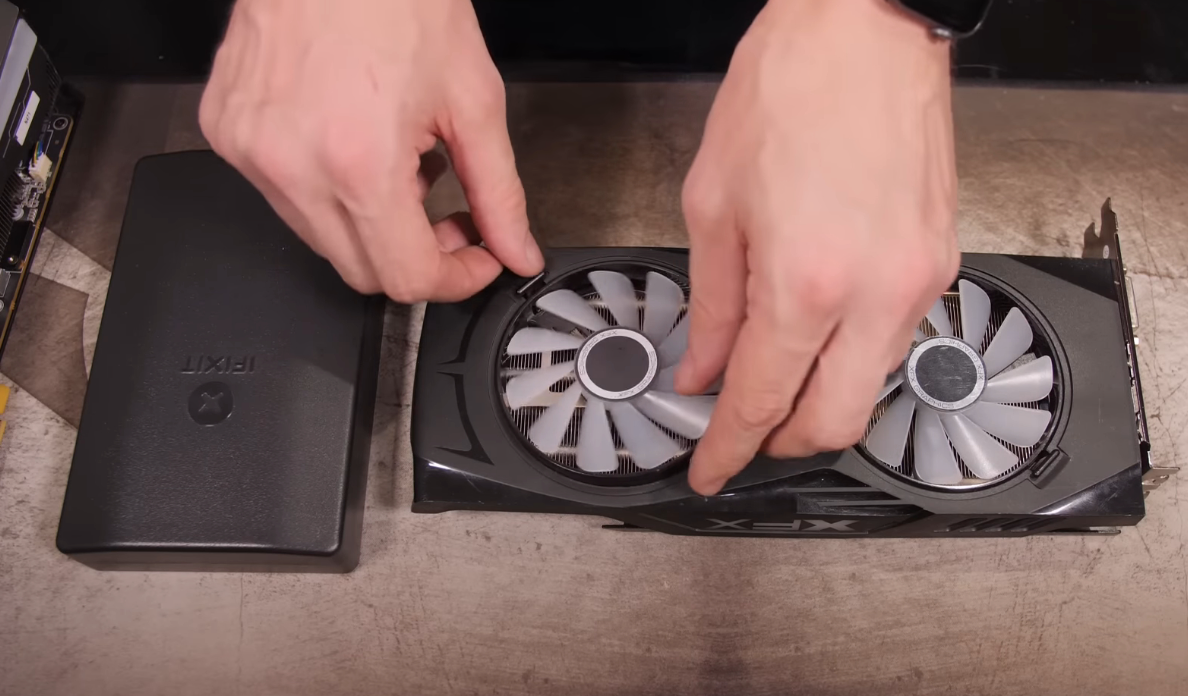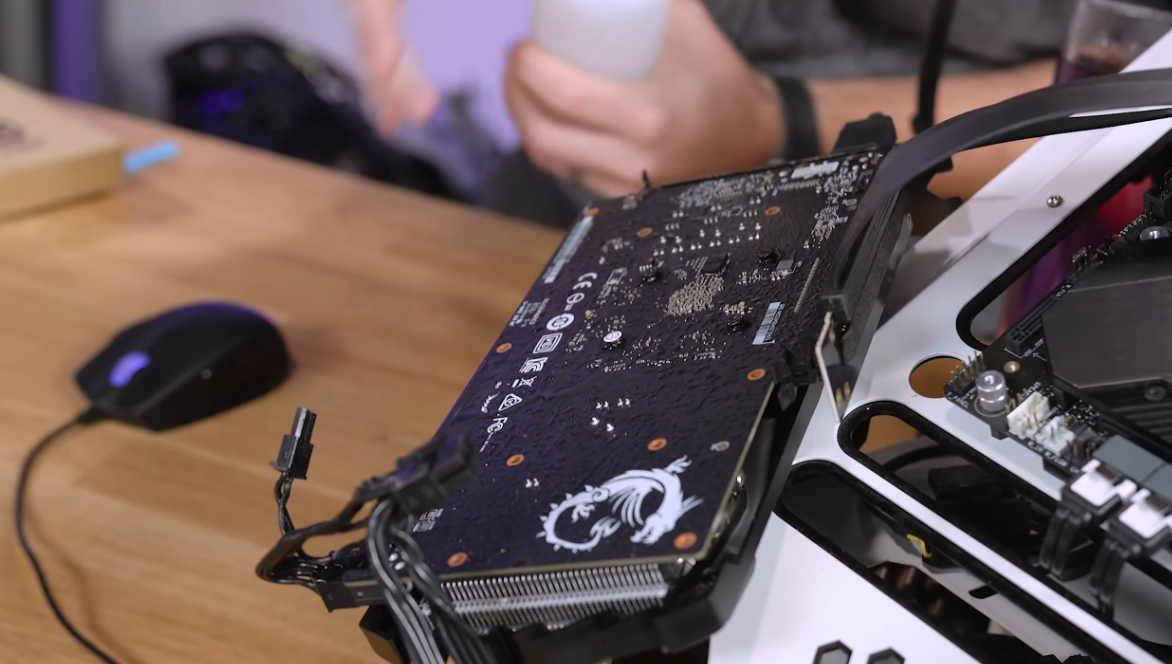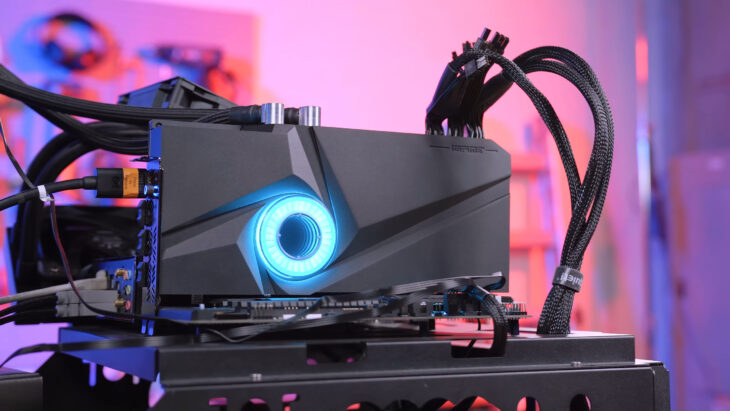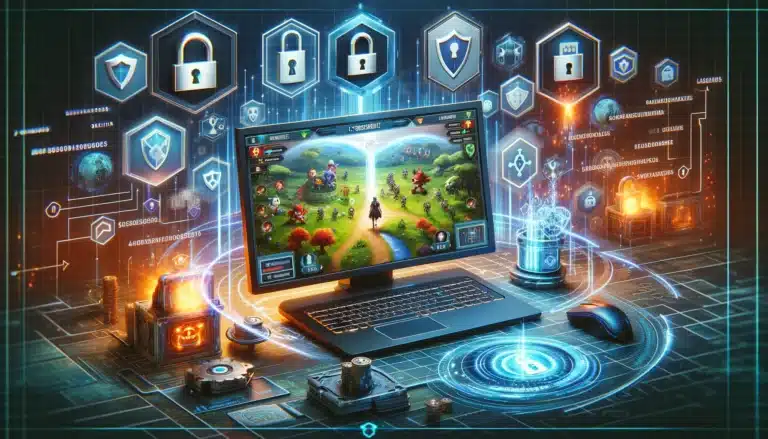GPU fans are crucial for keeping the computer cool by removing heat during heavy graphics use.
However, a fan doesn’t have be active all the time.
When GPU fans are constantly on, it might signal problems like overheating or hardware malfunctions.
Here are some potential issues a constantly working fact might indicate, and a proper solutions for them.
1. Overheating
You can identify overheating by checking if the GPU’s temperature exceeds normal operating ranges, typically between 60 to 85 degrees Celsius under load. High temperatures can cause the system to throttle performance or shut down unexpectedly.
Solution
Ensure proper airflow within the case by reorganizing cables and components if necessary. Additionally, applying new thermal paste can improve heat transfer from the GPU to its cooler. Regularly cleaning dust from the fan and heatsink also helps maintain optimal cooling efficiency.
2. Outdated BIOS or Drivers
Outdated BIOS or drivers can lead to inefficient fan control, causing them to run continuously. Check the current versions of your system’s BIOS and GPU drivers against the latest releases on the manufacturer’s website.
Solution
Update the BIOS and GPU drivers to the latest version. Manufacturers often release updates that improve hardware compatibility and performance, including better fan control algorithms.
BIOS Update
- Identify Motherboard: Use
Command Promptwithwmic baseboard get product,Manufacturerto find your motherboard’s model. - Download Update: Visit the manufacturer’s website, find your motherboard model under “Support” or “Downloads,” and download the latest BIOS update.
- Prepare Update: Extract the update to a USB drive formatted in FAT32.
- Apply Update: Restart your PC, enter BIOS/UEFI (usually F2, F10, DEL, ESC), find the BIOS update section, and follow instructions to update from the USB drive. Do not power off during this process.
GPU Driver Update
- Identify GPU Model: In “Device Manager” under “Display adapters,” find your GPU model.
- Download Drivers: For NVIDIA or AMD, visit their website, find your GPU, and download the latest drivers. For Intel, use the Intel Download Center or Intel DSA.
- Install Drivers: Run the downloaded installer, follow on-screen instructions, opting for a “Custom” or “Express” installation as preferred. Restart if prompted.
3. Lack of Case Cleaning
Dust buildup restricts airflow, leading to increased temperatures and causing fans to work harder. Inspect the case internals and fans for visible dust accumulation.
Solution
Use compressed air to blow out dust from the case, fans, and heatsinks. Ensure the case’s intake and exhaust paths are clear of obstructions.
4. Faulty GPU Fan

A malfunctioning device may run continuously or fail to adjust its speed properly. Listen for unusual sounds or check if the fan spins unevenly or wobbles.
Solution
Ensure the fan is compatible with your GPU model by checking the manufacturer’s specifications and user reviews for reliability and performance.
5. Software or Hardware Conflicts
Conflicts between software settings or hardware components can cause abnormal fan behavior. Check for conflicting GPU utility settings or recent hardware changes.
Solution
Reset GPU settings to default using its control software. Remove any recently installed hardware to see if the issue resolves, indicating a potential conflict.
How Reset GPU Settings to Default?
- NVIDIA: Right-click desktop > “NVIDIA Control Panel” > “Manage 3D settings” > Click “Restore.”
- AMD: Right-click desktop > “AMD Radeon Settings” > “Preferences” > “Restore Factory Defaults.”
- Intel: Right-click desktop > “Intel Graphics Settings” > “Options and Support” > “Restore Defaults.”
How to Remove Recently Installed Hardware?
- Power Off: Turn off your computer and unplug it.
- Access: Open the case and locate any new hardware components.
- Remove: Carefully remove the recently added components.
- Restart: Close the case, plug in your computer, and turn it on to check if the issue is resolved.
Fun Fact: Did you know that NVIDIA GeForce RTX 2070 has nearly the same performances as Sony PlayStation 5.
6. Incorrect Temperature Settings
Improperly set temperature thresholds in GPU software can lead to fans running non-stop. Verify the temperature settings in the GPU’s control software. Temperature around 60°C to 70°C will provide a good balance. Also, it can go up to 85°C when running more demanding processes, such as video games.
Solution
Adjust the temperature threshold settings in the GPU’s control software to ensure fans operate only when necessary. Set a balanced profile for everyday use.
How to Change the Temperature?
Open the control software (NVIDIA Control Panel or AMD Radeon Settings). Navigate to the thermal settings or fan control section. Adjust the temperature threshold to a higher value for the fans to start later, and select a “Balanced” or “Auto” fan profile for optimal noise and cooling performance during everyday use. Save your changes.
7. High GPU Load
Constant high load on the GPU forces the fans to work overtime. Monitor GPU usage using task manager or dedicated monitoring software to identify unnecessary processes.
Solution
Reduce GPU load by closing unnecessary applications or lowering game and application graphics settings. Consider upgrading hardware if the GPU is consistently overloaded.
How to Know When it is Time to Get a New GPU?
When you notice significant performance drops in new applications or games, frequent crashes or graphical glitches, inability to support desired display resolutions or refresh rates, or when your current GPU no longer meets the minimum requirements for software updates and new technologies.
8. Physical Damage

Physical damage to the GPU or its cooling system can impair fan function. Inspect the GPU for signs of damage or wear.
Solution
If physical damage is found, professional repair or replacement might be necessary. Contact the manufacturer for repair services or warranty claims.
Can I Replace GPU fan on My Own?
It requires basic technical skills and tools. Ensure you purchase a compatible fan, carefully disassemble the GPU casing, and follow the manufacturer’s instructions or online tutorials for guidance.
9. Incompatible Components
Incompatible hardware or software can lead to excessive fan operation. Ensure all system components and software are compatible with the GPU.
Solution
Check compatibility lists provided by the GPU manufacturer. Replace or update incompatible components or software to resolve conflicts.
There are the Essentials
- Motherboard slot type (e.g., PCI Express)
- Power supply wattage and connectors
- Physical space in your case
- Your setup must meet particular performance requirements
10. Misconfigured Settings
Incorrect fan speed settings in control software can cause fans to run continuously. Review the fan settings in the GPU’s control software.
Solution
Adjust the fan curve or settings within the GPU’s control software to ensure it responds appropriately to temperature changes. Select automatic fan control when available to allow the software to manage fan speeds efficiently.
How to Change the Settings?
Use GPU control software (e.g., MSI Afterburner, NVIDIA Control Panel, AMD Radeon Settings). Access the fan settings or curve adjustment section. Create a custom fan curve where fans increase speed at higher temperatures. For example, set fans to start at 20% speed at 30°C, gradually increasing to 100% at 80°C.
FAQs
How often do GPU fans fail?
GPU fans can fail due to various factors, such as dust accumulation, bearing wear, power surges, or overheating. The failure rate of GPU fans depends on the quality and usage of the fans, but some sources suggest it is around 2-5%.
How to check GPU health?
You can check your GPU health by using software tools that monitor the GPU temperature, load, memory usage, and fan speed. Some examples are MSI Afterburner, GPU-Z, and HWMonitor. You can also use the DirectX Diagnostic Tool or the Device Manager to check the device status and driver updates.
How hot is too hot for GPU?
The safe temperature range for a GPU varies depending on the model and manufacturer. Generally, modern NVIDIA GPUs should stay below 85°C, while modern AMD GPUs should stay below 100°C. You can find the maximum temperature limit for your specific GPU on the manufacturer’s website or specifications.
How do I know if my GPU is failing?
Some common signs of a failing GPU are screen glitches, artifacts, crashes, blue screens of death, performance drops, and unusual fan noises. If you encounter any of these issues, you should troubleshoot your GPU by updating the drivers, lowering the graphics settings, checking the cooling system, and testing the GPU under load.
Last Words
Regular monitoring and maintenance can prevent many common issues, ensuring that fans operate only when needed and conserve energy while minimizing noise. Prompt attention to any signs of trouble helps avoid more serious complications, keeping the system running smoothly and efficiently.




